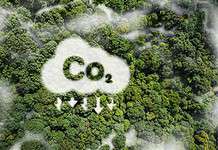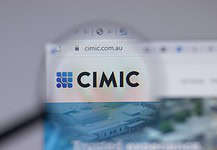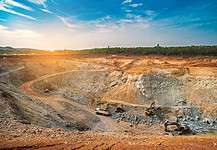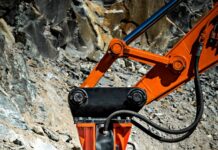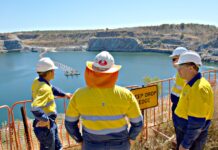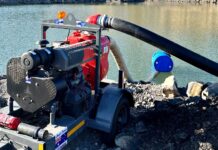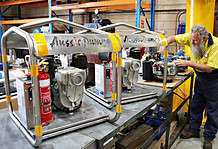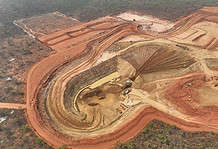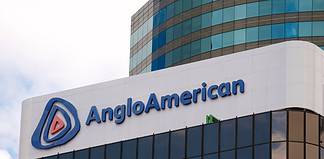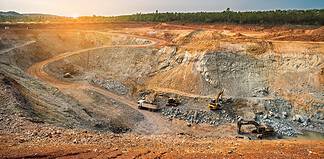DESPITE a long history digging up gold and coal across its major mining hubs – Bendigo, Stawell, the Gippsland Basin and Latrobe Valley – Victoria currently ranks the least or second least attractive destination for minerals investment. Yet the State is the METS capital of the country; and through Government backing more investment is expected to flow into the region. A proud advocate of mining in the State, Victorian Resources minister Wade Noonan spoke to Elizabeth Fabri about the importance of mining and the programs in place to promote growth.
Q. While Victoria doesn’t top the list for mining investment in Australia it does have a proud history. How important is mining to the State economy?
The mining industry is a key driver of the Victorian economy, supporting jobs and future investment opportunities. We are proudly the biggest exporter of mining equipment, technology and services (METS) in Australia – a sector worth $17 billion to the State’s economy in 2012.
Our mining industry encompasses large-scale, open-cut coal mining for the power industry, mining for metals including gold and copper, and minerals for manufacturing.
The industry is made up of engineering, manufacturing, transport, professional services, consulting, legal services, accounting and finance.
A recent Deloitte Access Economics report estimated that Australian mining and METS activities were worth $133 billion in 2015-16 – with more than 484,000 jobs supported by the sector. Looking at Victoria through this lens could see our mining and METS sector supporting more than 121,000 jobs.
The Andrews Labor Government’s unprecedented program of infrastructure works includes level crossing removals, the Metro Tunnel and West Gate Tunnel projects, and the widening of the Tullamarine Freeway, M80 Western Ring Road and Monash Freeway.
All of these projects are supported by the mining and extractives industries for raw materials.
Research shows there are about 485 operating quarries across our state that supply the rock, gravel, sand and base resources for our $21.6 billion-a-year construction industry.
Q. How has the Victorian mining industry fared in recent years?
After 150 years of exploration, gold mining remains a key pillar of the Victorian mining industry – even as international gold prices fluctuate.
A number of resources companies are still exploring for gold today. Victoria’s brown coal, which is not exported but used for electricity generation, remains a valued resource. Breakthroughs in technology are opening up the prospect of exports of highly-transformed brown coal as fertiliser, liquid biofuels and even hydrogen gas.
Q. Can you describe some of the State Government initiatives and how they are supporting the mining industry, such as the TARGET grants and Latrobe Valley Mine Rehabilitation?
The $15 million TARGET co-investment grant program provides financial co-investment funding for companies wanting to explore for minerals. It’s a dollar-for-dollar to help cover up to half the cost of eligible exploration activities – including geophysical surveys, drilling and sampling analysis.
Latrobe Valley coal mine rehabilitation is being managed in a number of ways. We are developing a Regional Rehabilitation Strategy for the Latrobe Valley’s three brown coal mine voids.
The strategy seeks to set a safe, stable and sustainable landform for the Latrobe Valley coal mine and surrounding areas. It will address the knowledge gaps and unresolved issues associated with pit lake rehabilitation options.
To support this work, we have created a Latrobe Valley Mine Rehabilitation Advisory Committee to take on a key role in community engagement.
Additionally, we are moving to appoint a Latrobe Valley Mine Rehabilitation Commissioner, who will provide independent advice to the Government on rehabilitation issues.
The Commissioner will work closely with the community, stakeholders and the Latrobe Valley mine operators, and oversee individual rehabilitation planning for each of the coal mines.
We are currently finalising a statement on the future uses of coal in a low-emissions context. It’s examining uses of coal beyond thermal combustion. There are technologies that can transform coal to in-demand biofuels, fertilisers and even hydrogen gas for export.
This could potentially open up new industries and employment opportunities for the Latrobe Valley.
The Committee for Gippsland’s report found there is “the potential to create thousands of jobs for Victoria through the development of coal for low emission fertiliser, hydrogen, and a number of other products.”

Q. How are the region’s major mines benefiting local communities?
Last year I attended the launch of the Committee for Gippsland’s economic report Our Region Our Future. That report found that almost 1100 people work in the mining sector, earning collectively $154 million a year in wages.
That’s a major boost to local economies – particularly as people spend their money in local restaurants, cafes and shopping outlets.
Q. You mentioned Victoria is the largest exporter of METS in the country.
Every year Melbourne has the great pleasure of hosting the International Mining and Resources Conference (IMARC) – the largest international mining conference in the Southern Hemisphere.
It’s a valuable opportunity for local METS companies to showcase their capabilities on the world stage, build networks and create opportunities for local companies to get involved in major projects.
More than 2000 global mining industry leaders and international policy makers from 58 countries attended IMARC 2016.
Victoria is home to the global headquarters of BHP Billiton, MMG, Oceanagold, Newcrest Mining, Alumina, Saint Barbara and Orica, as well as Rio Tinto’s Asia Pacific regional headquarters.
Victorian-based firms account for around two thirds of mining market capitalisation and around three quarters of mining revenue in the ASX100.
According to an Austmine, more than 1900 Victorian companies are involved in the resources supply chain.
Recent survey findings show that the METS companies interviewed generate $4.3 billion in gross annual revenue and employ some 21,000 people.
Q. What will the Stawell and Hazelwood mine closures mean for the State?
These were commercial decisions made by the mines’ respective owners. Our thoughts are with every worker affected by the closures in these regional communities, and we’ll continue to support their transition to new jobs.
We’ve developed a landmark worker transfer scheme to enable displaced Hazelwood workers to move to other Latrobe Valley power stations. This will allow older workers to take early retirement packages and open up vacancies for people to continue their careers, and keep skilled jobs in the Valley.
We’ve established the Latrobe Valley Authority to kick-start new economic opportunities, while a transition package of $266 million is supporting jobs and the growth of local businesses.
The Stawell Gold Mine is currently in care and maintenance mode to keep the mine in a fit state should the management decide to re-open the mine in the future.
Q. How important is exploration to mining in the region?
We want Victorians to benefit from the state’s natural resources to support regional employment.
Our TARGET grants encourage continued exploration for natural resources in regional Victoria.
There is a pipeline of new resources projects for the future in regional Victoria, which will provide skilled jobs and an economic boost for local regional communities.
Q. What is your outlook for the Victorian resources sector in terms of expected growth, direction and opportunities in 2017 and beyond?
We believe the future for Victoria’s mining and extractives industries is positive. The growing demand for extractives will support our huge package of infrastructure investment – including public transport projects, level crossing removals, new roads and the Metro Tunnel.
Victoria’s projected population growth and urban development in the coming decades will drive demand for nearly 90 million tonnes of stone, sand, clay and other materials annually, up from the 46 million tonnes needed in 2015.
We expect the earth resources industry will continue to develop as Victoria’s largest program of infrastructure works gets underway.
This will support a pipeline jobs and training opportunities, and infrastructure of the future. This will ultimately improve the standard of living for all Victorians.
Victoria boasts an AAA-rated economy which has created more than 200,000 jobs in the last two years. We’ll continue to attract investment and drive jobs and economic growth into the future.


